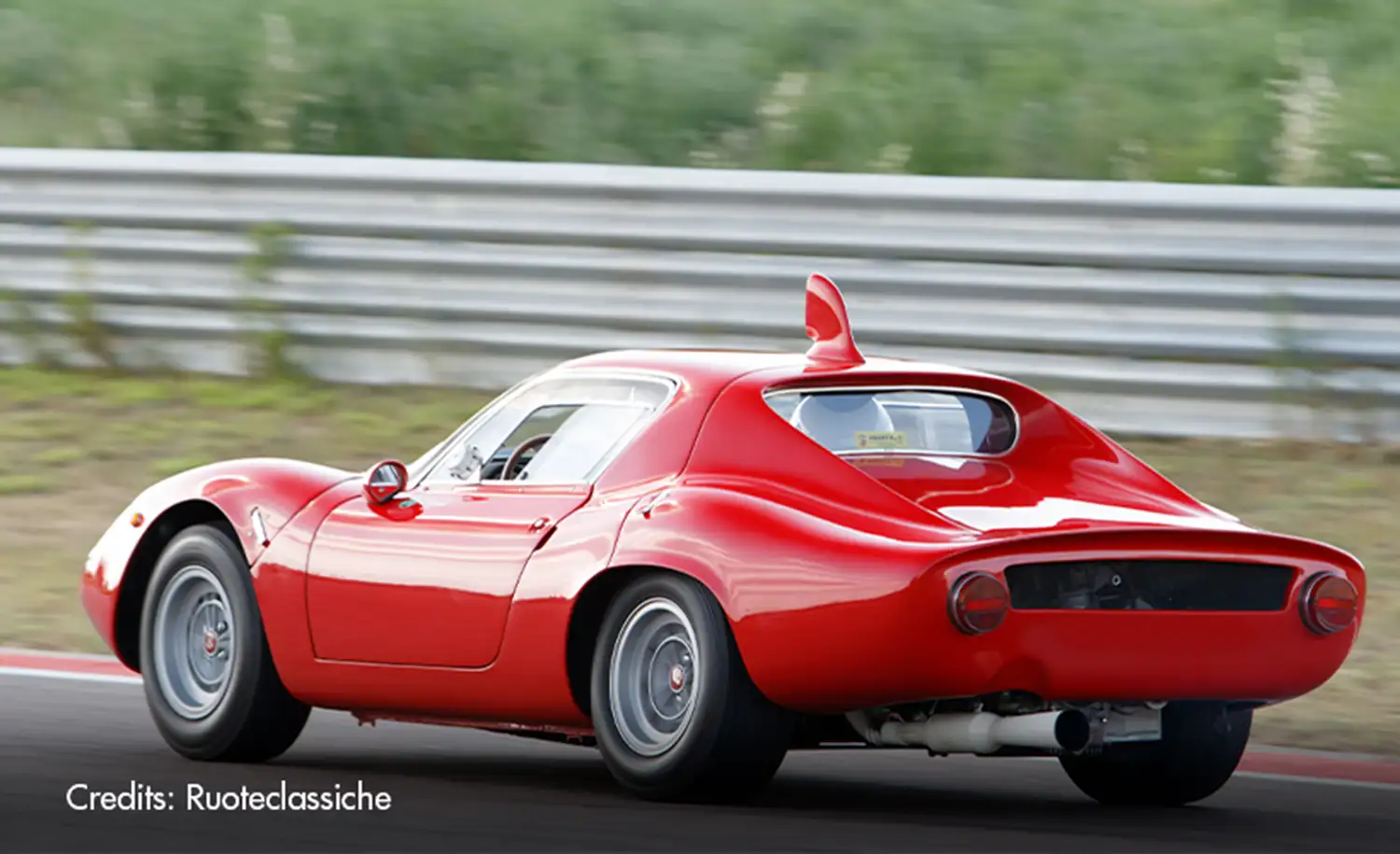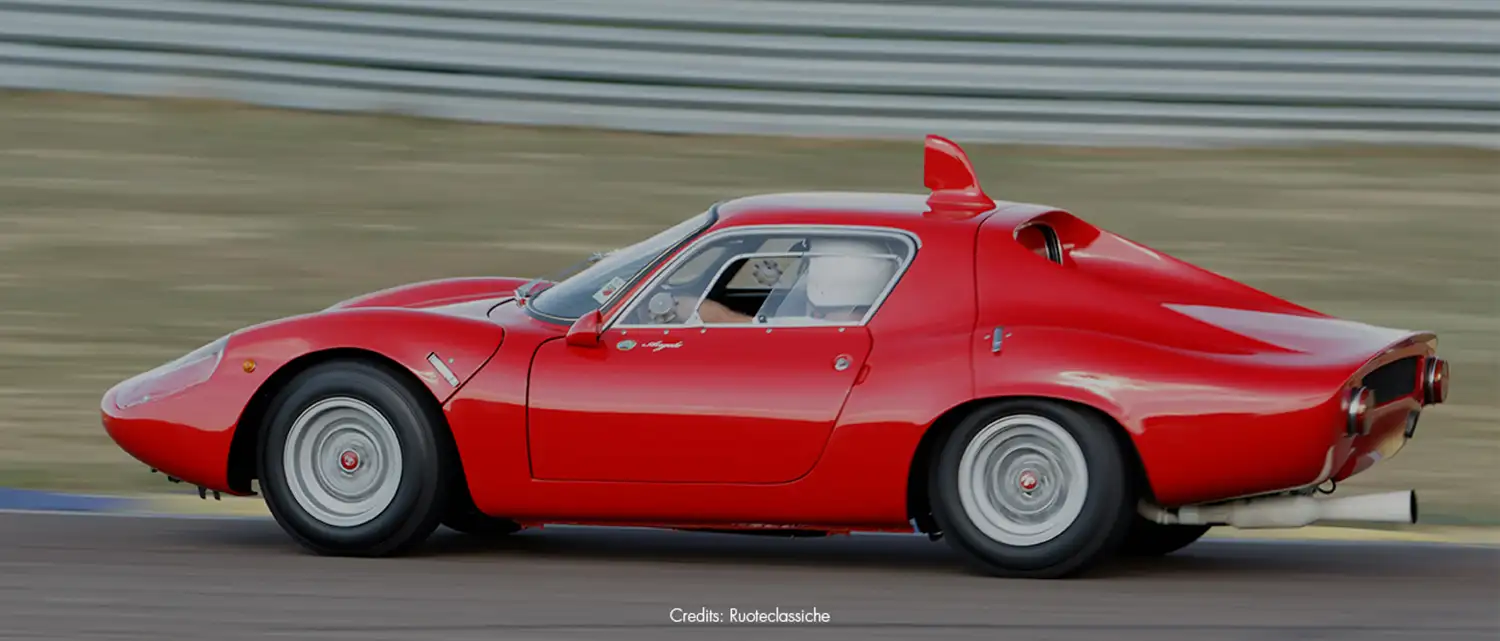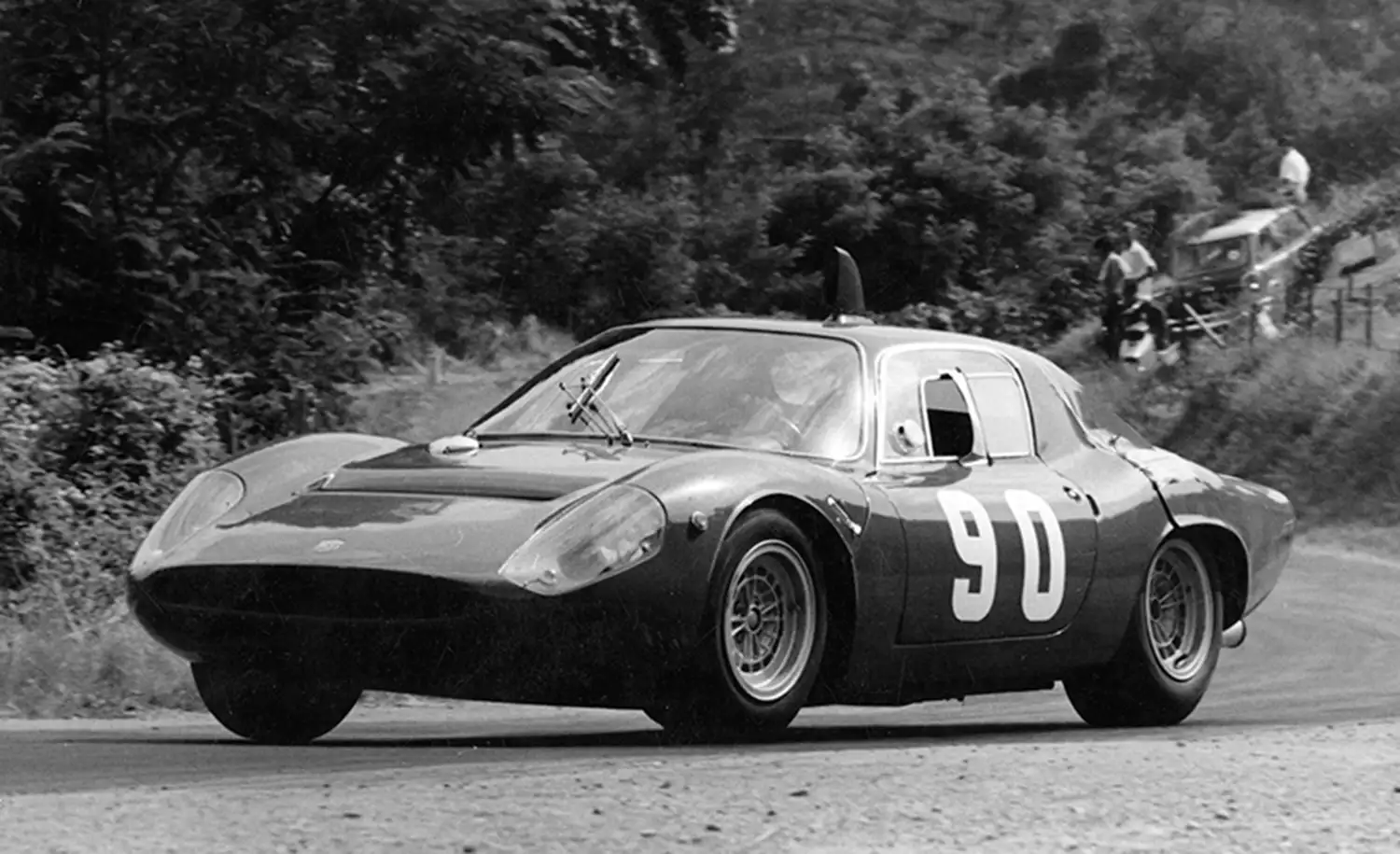
In the mid-1960s, Abarth, known for its nimble and potent racing cars, crafted the Fiat Abarth OT 1300, a coupé that embodied agility, lightweight design, and performance. Built on the Fiat 850 chassis, this model was Abarth’s strategic response to the increasing competition from major manufacturers, who began producing their own high-performance variants.
As Abarth navigated a period of significant change, the company chose to focus exclusively on Fiat, following the end of its partnership with the French company Simca. This shift marked a new chapter for Abarth, highlighting its dedication to racing and performance vehicles. Under the guidance of Mario Colucci and Carlo Abarth, the brand honed its engineering prowess, laying the foundation for the Fiat Abarth OT 1300.

Design and Specifications
Unveiled in 1965, the Fiat Abarth OT 1300 featured a body constructed from Fiat 850’s pressed sheet metal, with the engine mounted at the rear. The car’s design capitalized on the advantages of this layout, enhancing its handling and driving dynamics. The OT acronym denoted ‘Omologate Turismo’—approved touring cars—which were modified for both road use and racing.
The OT 1300’s engine was a refined version of the one used in the Abarth Simca 1300. It boasted a 1,298-cc dry-sump twin-cam engine, producing 147 hp at 8,800 rpm. Coupled with a five-speed gearbox, self-locking differential, and independent suspension, this setup provided an exhilarating driving experience. The lightweight design, with a total weight of just 655 kg, contributed to a top speed of 245 km/h.
Racing Success
Even before its official approval, the Fiat Abarth OT 1300 proved its mettle on the track. Its racing debut came at the Nürburgring 500 km on September 5, 1965, where it competed in the Prototype category, showcasing its capabilities by finishing among the top ten.

The OT 1300’s first significant victory came at the 1000 km race in Monza on April 25, 1966, where it achieved a class hat-trick. This success, along with others, prompted private drivers to place orders, leading to further victories in various races, particularly in uphill events.
In 1966, the Fiat Abarth OT 1300 continued its dominance at the Nürburgring 500 km, where it secured both class and overall victories. These achievements solidified Abarth’s reputation as a leading manufacturer in the racing world.
Innovations and Legacy
To address cockpit heat, modifications included an air intake on the right window and a distinctive ‘periscope’ on the roof to channel fresh air. The OT 1300 also saw design changes, including widened wheel tracks and an engine upgrade to 157 hp, enhancing its cornering stability and performance.
The Fiat Abarth OT 1300 remained a formidable competitor on the track until the 1970s, contributing to Abarth’s legacy as a premier racing car manufacturer. The car’s success and its role in Abarth’s marketing strategy exemplified the brand’s commitment to excellence in motorsport.
Through its numerous victories and engineering innovations, the Fiat Abarth OT 1300 established itself as a racing icon, leaving a lasting impact on the world of motorsport and securing Abarth’s place in automotive history.
Source: FCA Heritage
This Article use tools from Chatgpt
